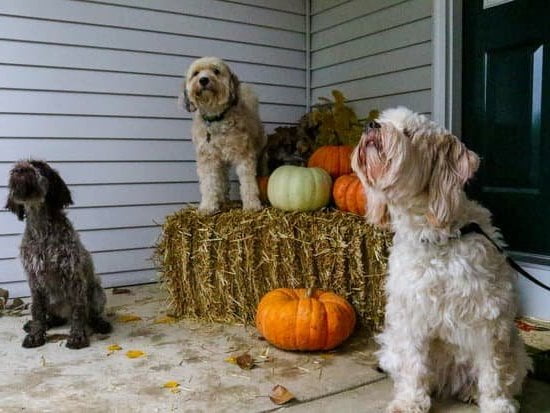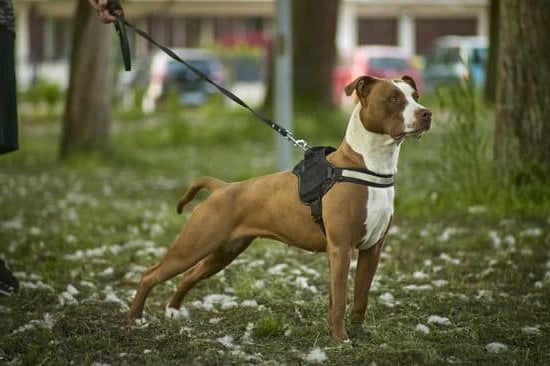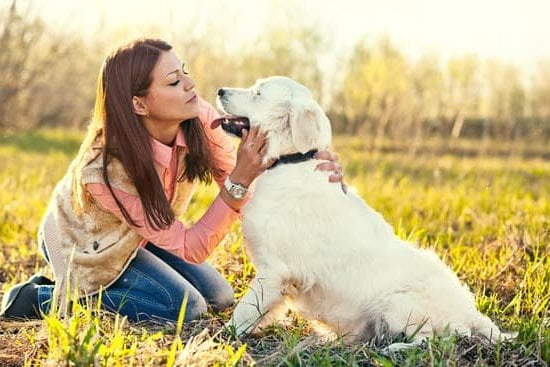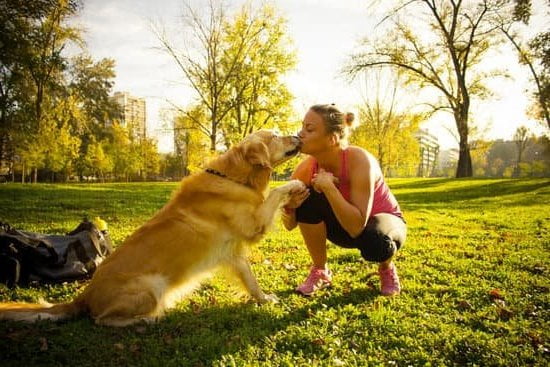Potty training is an essential aspect of owning a dog, ensuring that they learn proper bathroom etiquette and avoid accidents in the house. In this section, we will explore the importance of potty training for dogs, the benefits it brings, and common challenges and misconceptions surrounding the process.
Potty training is crucial not only for maintaining a clean and hygienic living environment but also for establishing a positive relationship with your furry friend. A well-trained dog understands where and when to do their business, preventing indoor accidents that can lead to odors, stains, and damage to your home. Additionally, potty trained dogs are generally more welcome guests at friends’ houses or public spaces.
However, teaching a dog proper potty habits can be challenging. It’s not uncommon for owners to face difficulties or encounter misconceptions about the training process. Some may believe that dogs will naturally learn on their own or that punishment is an effective tool for teaching them. In reality, consistency, patience, and positive reinforcement are key to successful potty training.
In the following sections of this article, we will delve into understanding your dog’s specific needs during potty training and how to create an effective routine. We will also explore techniques for teaching your dog to signal their need to go outside and the role of crate training in facilitating potty training. Stay tuned as we provide you with valuable information to help you successfully train your beloved canine companion in proper bathroom etiquette.
Understanding Your Dog’s Potty Training Needs
When it comes to potty training your dog, understanding their individual needs is crucial for success. There are various factors that can affect a dog’s potty training process, and being aware of these considerations will help you tailor your approach accordingly.
One important factor to consider is your dog’s age. Puppies have smaller bladders and shorter attention spans, so they may need more frequent potty breaks compared to older dogs. A general rule of thumb is that puppies can hold their bladder for one hour per month of age. For example, a 3-month-old puppy should be taken outside every three hours.
Breed and size are also important factors to consider. Some breeds may have better bladder control than others, while smaller dogs may need more frequent potty breaks due to their smaller bladders. Understanding these breed-specific or size-specific needs will help you set realistic expectations and establish an appropriate potty training routine.
In addition to age, breed, and size, it’s important to be able to recognize the signs that indicate your dog needs to go potty. These signs may include restlessness, pacing, sniffing around a certain area, or circling before squatting down. By paying close attention to your dog’s behavior and body language, you can better anticipate their needs and prevent accidents indoors.
To effectively understand your dog’s potty training needs, it’s essential to observe them closely during the initial stages of training. This will allow you to establish patterns in their behavior and determine how often they need potty breaks. By doing so, you’ll be better equipped to create a consistent schedule that meets their specific needs.
Key Points
- Consider your dog’s age when determining how frequently they need potty breaks.
- Different breeds may require different frequencies of bathroom breaks.
- Watch for signs such as restlessness or circling that indicate your dog needs to go potty.
- Observe your dog’s behavior closely to establish a consistent potty training routine.
By understanding your dog’s individual potty training needs, you can tailor your approach and set realistic expectations. Taking these factors into consideration will allow you to create a potty training routine that aligns with your dog’s age, breed, and size.
Additionally, knowing the signs that indicate when your dog needs to go potty will help you prevent accidents and encourage successful potty training. With patience and consistency, you’ll be well on your way to effectively addressing your dog’s potty training needs.
Setting Up a Proper Potty Training Routine
Creating a consistent potty training routine is crucial for successfully housebreaking your dog. By establishing a routine, you can teach your dog when and where to do their business, helping them develop good habits and avoid accidents in the house. Here are some important steps to follow when setting up a proper potty training routine for your furry friend.
Firstly, it is essential to create a consistent schedule for your dog’s potty breaks. Dogs thrive on routine, so establishing set times for them to go outside will help reinforce the behavior you want. Take your dog out first thing in the morning, after meals or playtime, before bedtime, and during other regular intervals throughout the day. Consistency is key here, as it helps train your dog’s bladder and bowels to empty at specific times.
Secondly, choose an appropriate potty area or spot for your dog. Ideally, this area should be easily accessible and have consistent footing (such as grass or gravel) that resembles their bathroom environment outside. Take your dog directly to this designated spot every time they need to go potty. By consistently using the same area each time, you reinforce where they should eliminate and avoid confusion.
Lastly, positive reinforcement and rewards play a vital role in potty training. When your dog successfully goes potty outside in the designated spot, immediately praise them with enthusiasm and offer treats or verbal affirmations. This positive reinforcement helps them associate going outside with positive experiences and motivates them to continue this behavior.
| Time | Activity |
|---|---|
| 7:00am | Take dog outside to designated potty area |
| 8:00am | Feed breakfast |
| 9:00am | Take dog outside to designated potty area |
Remember, establishing a proper potty training routine takes time and patience. Consistency and positive reinforcement will go a long way in helping your dog understand where and when they should go potty. With persistence, your furry companion will become fully potty trained in no time.
Effective Techniques for Teaching Your Dog to Signal Their Need to Go
One of the key aspects of successful dog potty training is teaching your furry friend how to signal their need to go outside. By implementing effective techniques, you can ensure that your dog knows how to communicate their needs, which in turn prevents accidents and promotes a smooth potty training process.
Exploring different methods for teaching dogs how to indicate their need to go potty
One popular technique for teaching dogs to signal their need is bell training. This involves hanging a small bell by the door that leads outside, and then teaching your dog to ring it with their nose or paw when they need to go out.
You can start by associating the sound of the bell with going outside: every time you take your dog out, ring the bell before opening the door. Eventually, your dog will learn to associate ringing the bell with going outside and will do it independently when they want to go potty.
Another method is teaching your dog to scratch at the door when they need to go out. Start by encouraging them to use their front paw to scratch at the door or make any distinctive sound when they want attention or need something. When they naturally scratch at the door, promptly let them out and offer praise and treats as positive reinforcement.
Using a specific command can also be an effective way for dogs to communicate their needs. Choose a simple word or phrase such as “potty” or “outside” and consistently use it when you take your dog out for potty breaks. Over time, they will associate that command with going outside and will begin using it as a way to indicate their needs.
Step-by-step process for implementing these techniques
Here’s a step-by-step process for implementing these techniques:
- Choose which signaling method you would like to use – bell training, scratching at the door, or using a specific command.
- Introduce your chosen method gradually to your dog. For bell training, hang the bell by the door at their nose level. For scratching at the door, encourage them to mimic the behavior during playtime with you. For using a command, practice using it consistently during potty breaks.
- Be patient and consistent in reinforcing the desired behavior. Every time your dog successfully signals their need to go outside, promptly let them out and offer praise and rewards.
- If your dog is struggling to understand or use the chosen method, consider seeking professional help or guidance from a dog trainer.
By teaching your dog how to signal their need to go potty, you can establish strong communication with them and make the potty training process much smoother and more efficient.
Crate Training and Its Role in Potty Training
One of the most effective techniques for potty training a dog is crate training. Crate training involves teaching your dog to associate their crate as a safe and comfortable space, while also using it as a tool to aid in their potty training process. By utilizing a crate, you can help your dog develop bladder control and establish a regular routine for going potty.
When introducing your dog to the crate, it’s important to make it a positive experience. Start by gradually acclimating your dog to the crate through short periods of time with the door open. Place comfortable bedding inside and provide them with toys or treats to create a positive association. As they become more comfortable, gradually increase the duration of time spent in the crate.
The size of the crate is crucial for successful potty training. It should be just large enough for your dog to stand up, turn around, and lie down comfortably. A crate that is too large may encourage your dog to use one corner as their designated bathroom area, defeating the purpose of potty training.
| Benefits of Crate Training: | Size Considerations for Crate: |
|---|---|
| – Helps develop bladder control | – Should be just large enough for dog to stand up and turn around |
| – Establishes regular routine for going potty | – Too large crates may encourage designated bathroom areas |
During the potty training process, utilize the crate strategically. When you are unable to supervise your dog or at times when accidents are more likely to occur (such as right after meals or naps), place them in their crate. This helps prevent accidents from happening and reinforces the concept of holding their bladder until they’re let out.
It’s important to note that the crate should never be used as a form of punishment. It should always be associated with positive experiences and relaxation. Never leave your dog in the crate for longer than they can hold their bladder or bowels, as this can lead to accidents and undo progress.
By incorporating crate training into your potty training routine, you are providing your dog with a safe and secure space while teaching them valuable bladder control skills. With consistency, patience, and positive reinforcement, your dog will soon learn to associate the crate with potty training success.
Dealing with Accidents
Accidents are an inevitable part of the potty training process, especially during the initial stages. However, it is crucial to handle these accidents in a proper manner, as it can greatly affect the success of your dog’s potty training. Firstly, it is important to understand that accidents happen and should not be punished. Yelling, scolding, or rubbing your dog’s nose in their mess will only create fear and confusion. Instead, focus on proper cleanup and encouraging progress.
When accidents occur, it is vital to clean up thoroughly to eliminate odors and prevent repeat accidents in the same spot. Dogs have a keen sense of smell and may be more likely to soil an area that still has traces of their scent. Use an enzymatic cleaner specifically designed for pet messes as they effectively break down the odor-causing molecules.
While cleanup is important, equally crucial is encouraging progress during the potty training process. Positive reinforcement plays a key role in teaching your dog where and when to go potty. When your dog successfully eliminates in the designated potty area or follows their signal correctly, reward them immediately with verbal praise, treats, or playtime. This positive association will reinforce desirable behaviors and motivate your dog to continue following the potty training routine.
It is important to remember that setbacks may occur during the potty training journey. Accidents can happen even after weeks of successful training. In such cases, stay calm and patient with your dog. Avoid punishing or getting frustrated as this can hinder progress and cause anxiety related to elimination for your furry friend. Instead, review your routine for any adjustments that may need to be made and continue with consistent training efforts.
By approaching accidents with patience and providing positive reinforcement throughout the potty training process, you can help your dog develop good bathroom habits successfully”.
Patience and Consistency
Promoting Patience and Consistency
Patience and consistency are two key factors that contribute to successful potty training for dogs. Potty training can be a challenging process, but with the right mindset and approach, it is achievable. It is important to remember that every dog is unique and may have different learning speeds and preferences. Therefore, it is crucial to practice patience throughout the training process.
Addressing Frustrations and Setbacks
During potty training, frustrations and setbacks are bound to occur. Accidents may happen even after weeks of successful training, and this can be disheartening for pet owners. It is important to stay calm and avoid getting angry or punishing your dog in response to accidents. Remember that accidents are a part of the learning process, and it takes time for dogs to develop good bladder control.
If accidents occur, resist the urge to scold or reprimand your dog as this can create fear or anxiety around the potty training process. Instead, focus on minimizing chances of future accidents by being attentive to your dog’s signals and increasing supervision during key times such as after meals or sleep.
Tips for Staying Motivated
Potty training can be a lengthy process, but staying motivated is essential for success. One effective way to stay motivated is by celebrating progress along the way. Each successful potty break outside or accurate signal from your dog should be acknowledged with praise, treats, or playtime.
Additionally, seeking support from others who have gone through the potty training journey with their dogs can help provide encouragement and motivation. Joining online communities or attending local dog clubs can give you an opportunity to connect with other pet owners facing similar challenges.
Lastly, always maintain a positive mindset during potty training. Dogs are sensitive to emotions and will respond better when they feel encouraged rather than criticized or scolded. Remember that potty training is a learning experience for both you and your dog, and by staying patient and consistent, you are setting the foundation for a successful outcome.
Troubleshooting Common Problems during Potty Training
Potty training your dog can sometimes be challenging, and it’s not uncommon to encounter problems along the way. In this section, we will address some common difficulties that may arise during potty training and provide strategies for overcoming them.
One common issue that many dog owners face is marking behavior. Marking involves urinating on objects or territory as a way of leaving their scent and claiming ownership. To address this problem, it’s crucial to reinforce the concept of appropriate elimination spots. Supervise your dog closely and prevent them from marking in undesirable areas. If you catch them in the act, redirect their attention to an appropriate spot and reward them when they eliminate there.
Another challenge that can occur during potty training is regression. Regression refers to a situation where a dog who has seemingly mastered potty training starts having accidents again. This setback can happen due to various reasons such as changes in routine, stress, medical issues, or disruptions in the household.
It’s essential to approach regression with patience and understanding. Reinforce previous training by going back to basics – maintain a consistent schedule, increase supervision, and offer praise and rewards for successful eliminations.
For some dogs, anxiety or fear-related accidents may be an obstacle during potty training. Anxious dogs might associate certain locations or experiences with fear and may have accidents as a result. It’s crucial to address any underlying anxiety issues through positive reinforcement techniques and gradual desensitization exercises. Create positive associations with potty areas by using treats or toys, and consider seeking guidance from a professional if your dog’s anxiety continues to impede progress.
Remember, each dog is unique, and troubleshooting may require experimentation with different techniques or seeking professional assistance. When faced with persistent challenges or if you’re unsure how to proceed, consulting with a dog trainer can provide valuable insights tailored to your specific situation.
By troubleshooting common problems effectively, you can overcome challenges during the potty training process and set your dog up for success. With patience, consistency, and understanding, you can help your furry friend develop good potty habits that will benefit both of you for years to come.
Conclusion
In conclusion, potty training is an essential aspect of dog ownership that offers numerous benefits. By diligently following a proper potty training routine, understanding your dog’s needs, and employing effective techniques, you can successfully teach your furry friend to signal when they need to go. Utilizing tools such as crate training and implementing consistent positive reinforcement will help expedite the process.
Throughout the potty training journey, it is crucial to remain patient and consistent. Setbacks and accidents may occur, but it is important not to get discouraged. Instead, focus on providing proper cleanup and encouragement to promote progress. Remember, accidents are a normal part of the learning process.
As you continue with your dog’s potty training journey, it is vital to troubleshoot any problems that may arise. Common challenges like marking or regression can be overcome with specific strategies. However, if these issues persist or become severe, seeking professional help from a dog trainer or behaviorist may be necessary.
Upon reaching success in your dog’s potty training journey, take a moment to celebrate their progress and achievements. This milestone is worth commemorating as you reflect on the hard work and dedication put into the process. Finally, always maintain successful habits in the long run by consistently reinforcing good potty training behavior.
By implementing these tips and techniques outlined throughout this article, you can effectively train your dog in potty training. With patience, consistency, and perseverance, you can create a happy and clean living environment for both you and your beloved furry companion.
Frequently Asked Questions
How long does it take to potty train a dog?
The length of time it takes to potty train a dog can vary depending on various factors. On average, it may take around four to six months to fully train a dog. However, it is essential to understand that each dog is different, and some may take longer than others.
Several aspects contribute to the duration of potty training, including the breed, age, temperament, and previous training or experience of the dog. It is crucial to approach potty training with consistency, patience, and positive reinforcement techniques.
How do I train my dog to pee and poop?
To train your dog to pee and poop in the appropriate area, consistency and positive reinforcement are key. Firstly, establish a designated spot where you want your dog to eliminate – this could be outdoors in your yard or a specific area indoors with puppy pads or artificial grass. Take your dog outside or bring them to the designated area frequently throughout the day and especially before and after meals, playtime, or sleep.
Be patient and wait for them to go potty while providing verbal cues such as “go potty” or “do your business.” Once they eliminate in the desired location, reward them with praise or treats while using positive reinforcement techniques consistently.
What is the hardest dog to potty train?
While it’s challenging to pinpoint one specific breed that is universally the hardest to potty train, certain breeds tend to pose more difficulties than others due to their unique characteristics. For example, small toy breeds such as Chihuahuas or Yorkies can be challenging because they have smaller bladders leading to more frequent accidents if not taken out regularly enough.
Additionally, stubborn breeds like Basset Hounds or Dachshunds may present challenges as they tend to be independent thinkers and may require extra patience during training sessions. However, it’s important not to make assumptions based solely on breed stereotypes as every individual dog has their own personality and learning capabilities which affect their ease of training in general – including potty training success.

Welcome to the blog! I am a professional dog trainer and have been working with dogs for many years. In this blog, I will be discussing various topics related to dog training, including tips, tricks, and advice. I hope you find this information helpful and informative. Thanks for reading!





